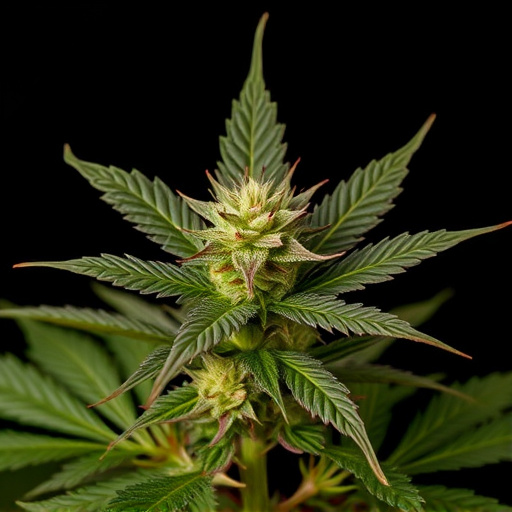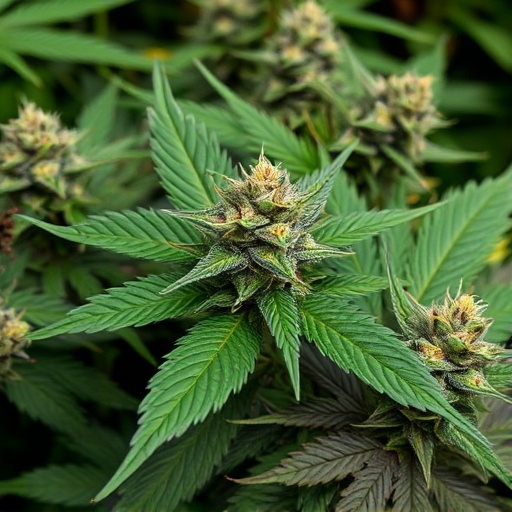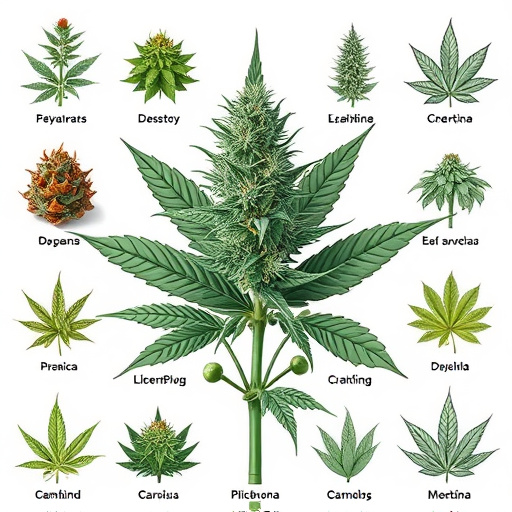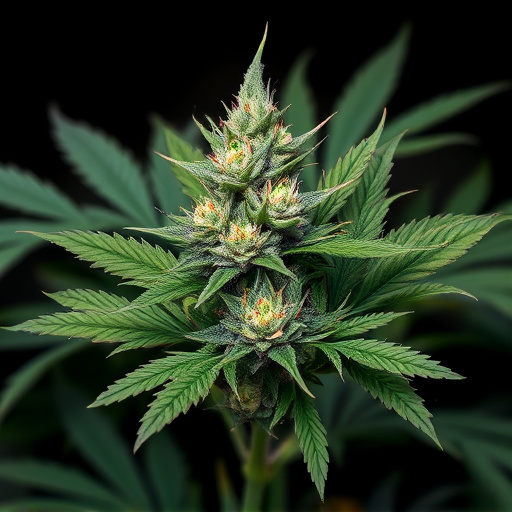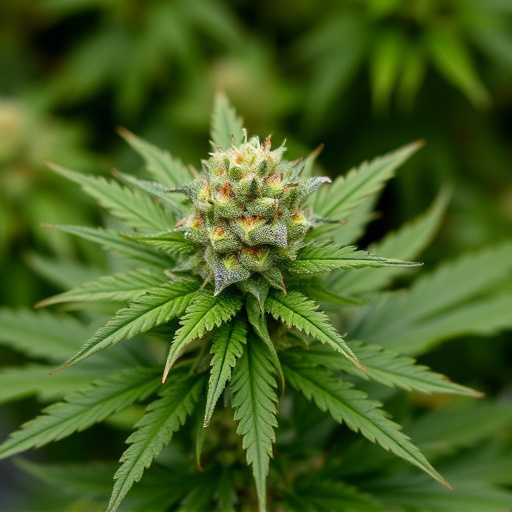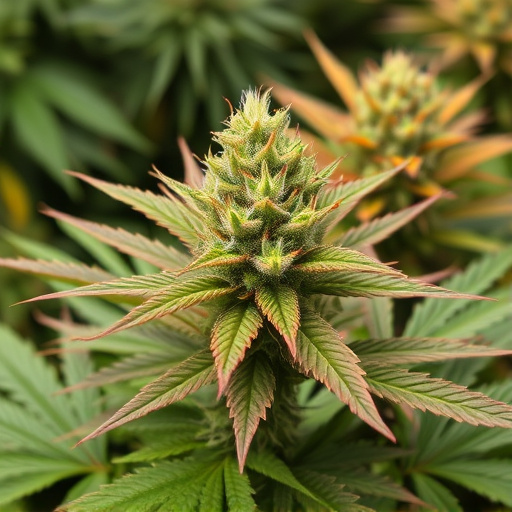Medical marijuana strains harness cannabinoids (THC, CBD) and terpenes for diverse therapeutic benefits. Each strain has a unique chemical composition affecting mood, pain management, and specific conditions like chronic pain, anxiety, depression, and nausea. Indica, Sativa, and hybrid varieties target distinct needs through their interaction with the endocannabinoid system, offering personalized treatment options.
Cannabis flowers have gained significant attention for their potential medical benefits, driving interest in understanding their unique composition. This article explores how cannabis flowers, particularly through their diverse medical marijuana strains, offer therapeutic properties. We delve into the science behind these strains, focusing on cannabinoids—the key compounds responsible for their effects. By examining specific conditions and the corresponding strain types, readers will gain insights into the multifaceted world of medical marijuana.
- Understanding Cannabis Flowers and Their Chemical Composition
- The Role of Cannabinoids in Medical Marijuana Strains
- Targeted Applications: Specific Conditions Alleviated by Different Strains
Understanding Cannabis Flowers and Their Chemical Composition
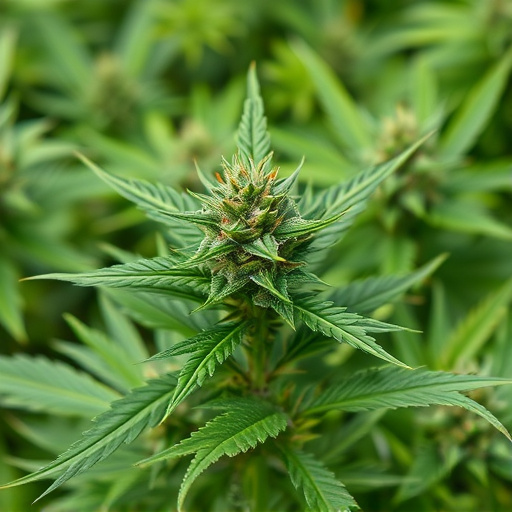
Cannabis flowers, often referred to as buds, are the most recognizable and valuable part of the cannabis plant, containing the highest concentrations of cannabinoids and terpenes. These compounds are responsible for the unique effects and therapeutic potential of medical marijuana strains. Each strain boasts a distinct chemical composition, with varying levels of THC (tetrahydrocannabinol), CBD (cannabidiol), and other minor cannabinoids, as well as a wide array of terpenes that contribute to the plant’s aroma and flavor.
Understanding these chemical profiles is crucial for patients seeking medical marijuana strains for specific conditions. Different ratios of cannabinoids can significantly impact the plant’s effects; for example, higher THC levels may provide stronger pain relief but also increase side effects, while CBD-rich strains offer potential therapeutic benefits without the intoxicating effects of THC. Terpenes further customize the experience by influencing the overall mood and enhancing certain medicinal properties, making cannabis flowers a complex and versatile resource for medical applications.
The Role of Cannabinoids in Medical Marijuana Strains
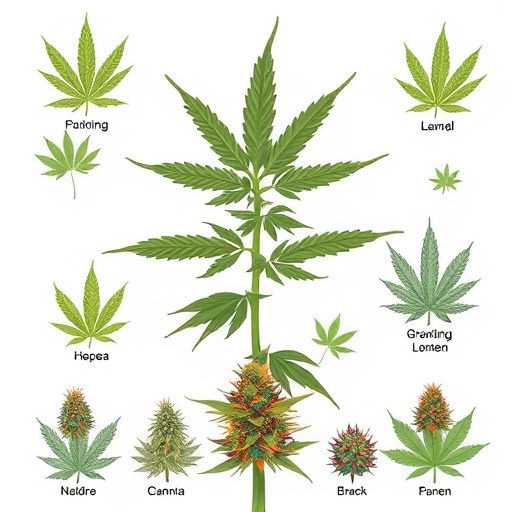
Medical marijuana strains owe their therapeutic properties largely to cannabinoids, chemical compounds found exclusively in the cannabis plant. Cannabinoids interact with the body’s endocannabinoid system (ECS), a complex network of receptors and enzymes that play a crucial role in maintaining homeostasis—the body’s internal balance. The most well-known cannabinoid is THC (tetrahydrocannabinol), responsible for the psychoactive effects associated with cannabis use, but other cannabinoids like CBD (cannabidiol) have gained significant attention for their potential medicinal benefits without inducing intoxication.
In medical marijuana strains, a unique combination of cannabinoids and terpenes (the aromatic compounds in cannabis) allows for a wide range of therapeutic applications. For instance, high CBD strains are often sought after for their anti-inflammatory, analgesic, and anxiolytic properties, making them promising treatments for conditions like chronic pain, multiple sclerosis, and anxiety disorders. Conversely, strains with higher THC content may be more effective in managing severe nausea, appetite loss, and certain types of neuropathic pain. This diversity in cannabinoid profiles highlights the potential of medical marijuana strains to address a broad spectrum of health issues, making them valuable tools in modern medicine.
Targeted Applications: Specific Conditions Alleviated by Different Strains

Cannabis flowers offer a wide range of medical benefits due to their diverse chemical composition, with various compounds working in synergy. Different strains of medical marijuana have been found effective in targeting specific conditions. For example, Indica strains are popular for their calming and relaxing effects, making them suitable for managing anxiety, insomnia, and chronic pain. Sativa strains, on the other hand, are known to stimulate mental activity and lift moods, which can help patients with depression, ADHD, and multiple sclerosis (MS). Hybrid strains combine the properties of both Indica and Sativa, offering a balanced approach to alleviate symptoms of post-traumatic stress disorder (PTSD), nausea, and appetite loss.
The effectiveness of medical marijuana strains lies in their ability to interact with the endocannabinoid system (ECS) in our bodies. The ECS plays a crucial role in maintaining homeostasis, or balance, by regulating various physiological functions. Different cannabis compounds, such as THC (tetrahydrocannabinol) and CBD (cannabidiol), bind to specific receptors within the ECS, triggering therapeutic responses. This targeted application of medical marijuana strains allows for personalized treatment options, catering to individual patient needs and preferences.
Cannabis flowers offer a wide range of medical benefits, primarily due to their diverse cannabinoid profiles. Understanding the unique chemical composition of different strains and their targeted applications is key to harnessing these benefits. Medical marijuana strains have shown promise in alleviating various conditions, from chronic pain and anxiety to inflammation and sleep disorders. As research continues, navigating the complex world of cannabis flower medicine becomes increasingly important for healthcare professionals and patients alike, unlocking a new frontier in holistic health care.







